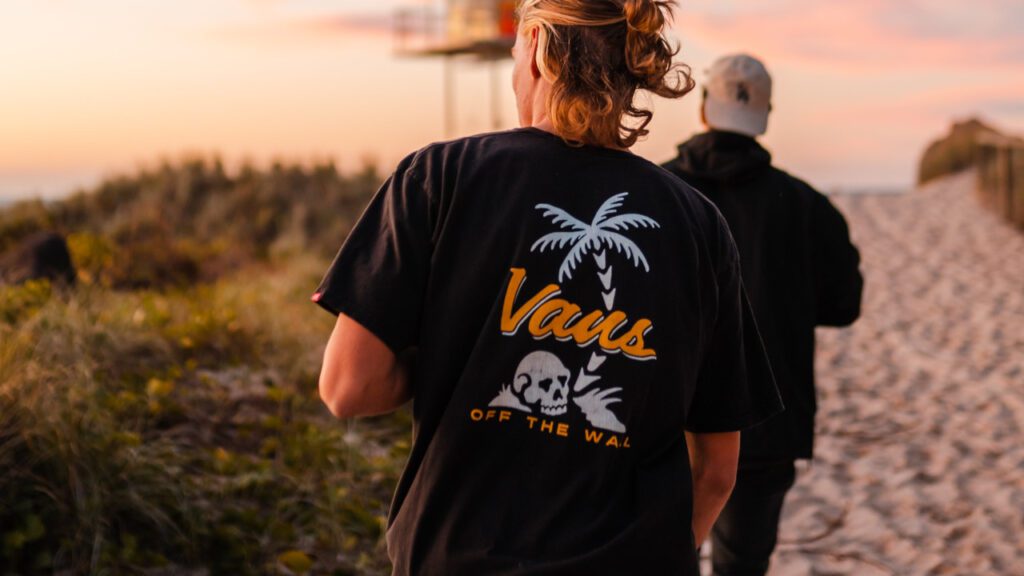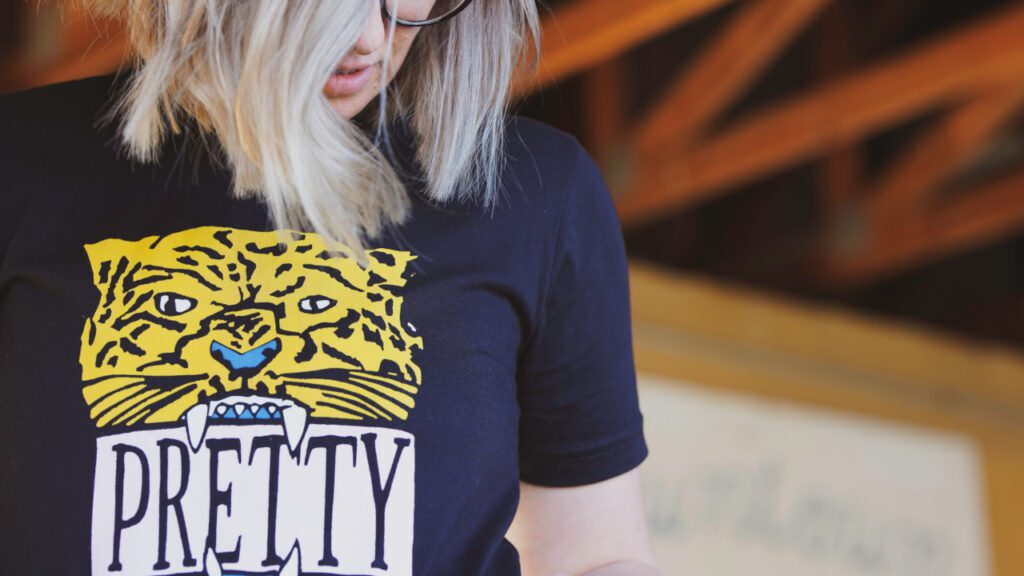From the introduction of DTG printing (Direct-to-Garment) in the mid-2000s to the recent emergence of DTF printing (Direct to Film) technology, the custom garment decoration industry has seen tremendous growth and change. In this blog post, we’ll explore the evolution of no minimum full-color printing, the various methods available to meet this demand, and how DTF printing is disrupting the market.

DTG Printing
In the mid-2000s, a new printing method called Direct-to-Garment, also know as DTG printing, was introduced to the custom decoration industry. This technology allowed for full-color printing without the need for a minimum order quantity. While DTG printing has evolved over the past 15 years, one limitation has remained constant – it can only print on certain materials. Since DTG printing uses water-based ink, it can only be used on natural fabrics such as cotton. However, pre-treat chemicals can be applied to allow for printing on blends and polyester, but the results are often less than perfect.
Laser Fusion Printing
In the early 2010s, Laser fusion printers from manufacturers like Oki Data gained popularity in the industry due to their low investment requirements. These printers use CMYK inks to create full-color prints that are transferred onto a paper, which is then heat pressed onto a product. While the quality of laser heat transfers has gotten better over the years, the process is considered a “hobby decoration method” by most industry experts.
Wide-Format Eco-Solvent Printing
In the mid-2010s, wide-format eco-solvent printers started being used to print onto heat transfer media that is then cut, masked, and heat pressed onto a product. This “print and cut” transfer method has opened up possibilities for printing on a wider range of products compared to DTG printing, but it still has its own limitations. Unlike a DTG printer, wide format printers are built to primarily print onto products other than apparel, such as banners and stickers.

DTF Printing
In the early 2020s, Direct to Film, also known as DTF printing, entered the market and took off rapidly due to its ease of use, low cost, and high-quality results. DTF printing combines the elements of DTG printing and wide-format printing by using DTG print heads on a wide-format printer that feeds into a screen print conveyor dryer. This results in a transfer that can be heat applied onto virtually any product.
In addition to being cheaper and outperforming the other full-color decoration methods, you don’t even have to purchase the equipment to take advantage of the technology. You can simply outsource printing of the transfers until you purchase your own equipment setup, which starts at around $20,000.
The Disruption Of DTF Printing
As no minimum full-color printing continues to evolve, it is safe to say that Direct to Film has disrupted the market for all other decoration processes. No other full-color decoration process has taken off at the speed that DTF printing has or impacted the screen printing market. With its versatility, cost-effectiveness, and quality, DTF is quickly becoming a favorite in the custom apparel decoration industry.
- How Social Proof Can Boost Sales For A Screen Printing Business
- Boost Your Screen Printing Online Sales With These Four Customer Types
- 5 Niche Strategies For DTF Printing Businesses
- Which Is More Profitable - DTF Printing Or Screen Printing?
- Which Is More Profitable - DTF Printing or DTG Printing?
- 5 Steps To Boost Screen Printing Sales With Email Marketing
- DTF Printers: How To Thank Customers Like A Pro | DecoNetwork
- The Perfect Online Product Description: A Screen Printer’s Guide
- Lawson Mini Trooper Automatic Screen Printing Press
- Screen Printing Pricing Strategies: A Practical Guide



